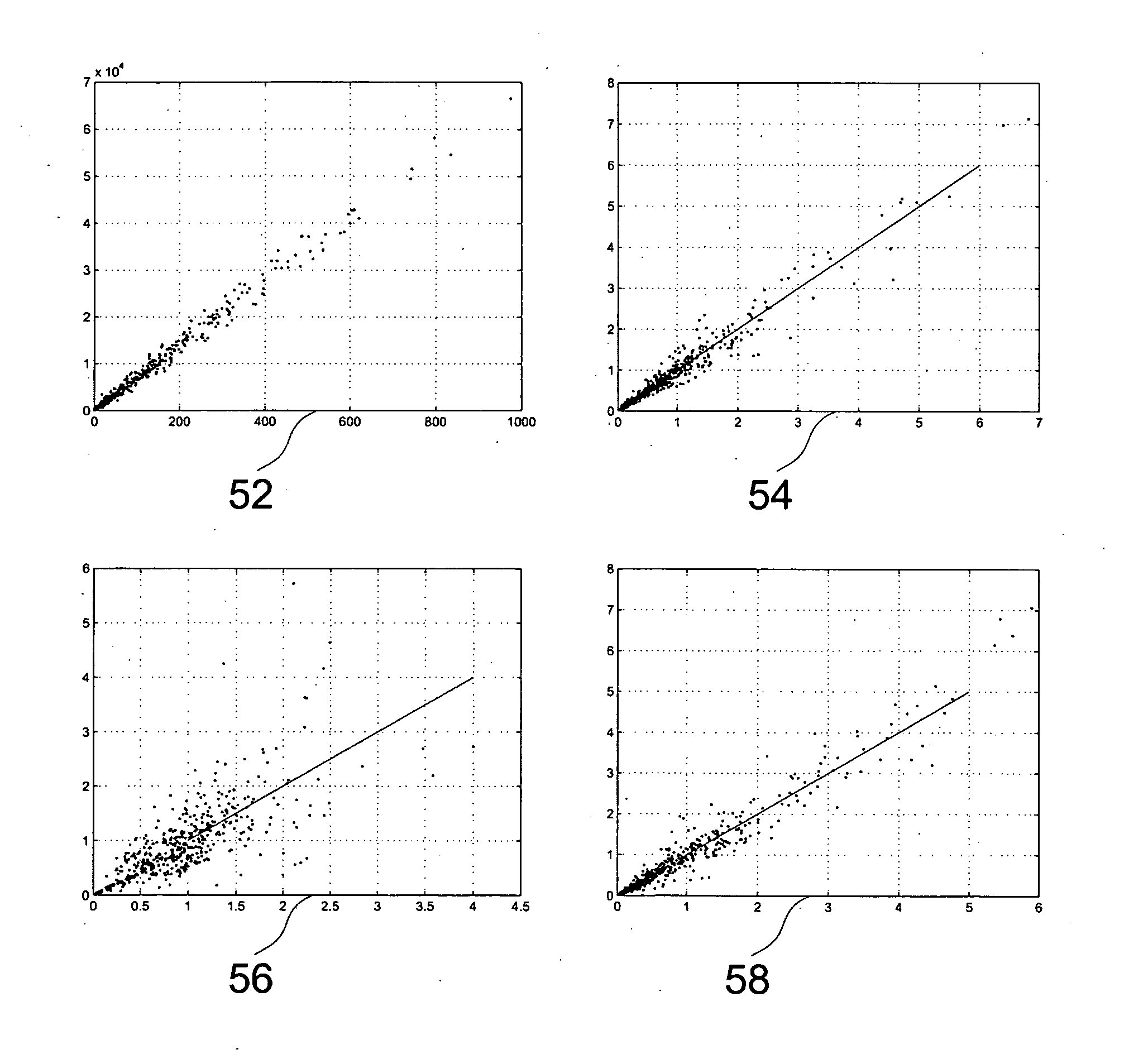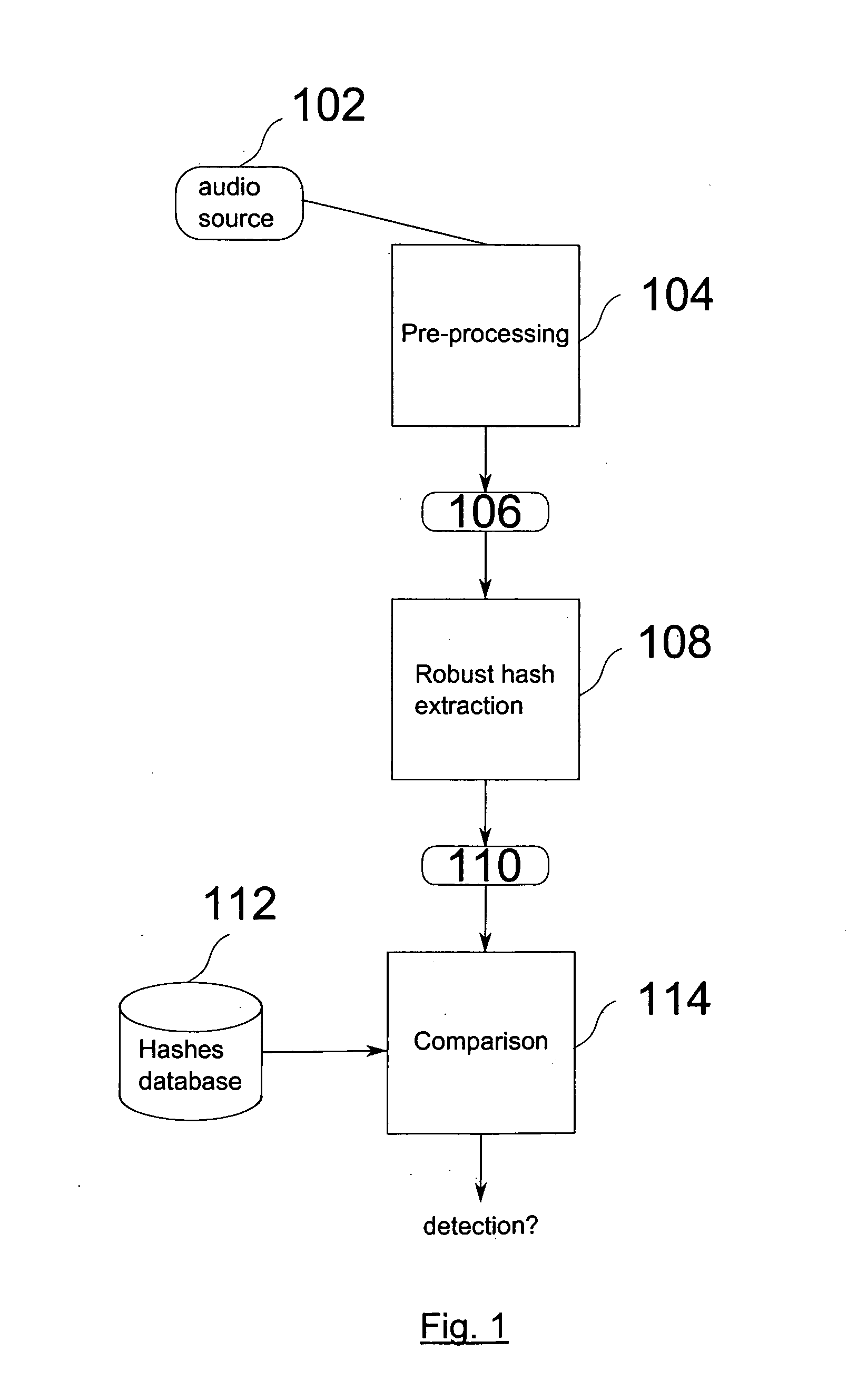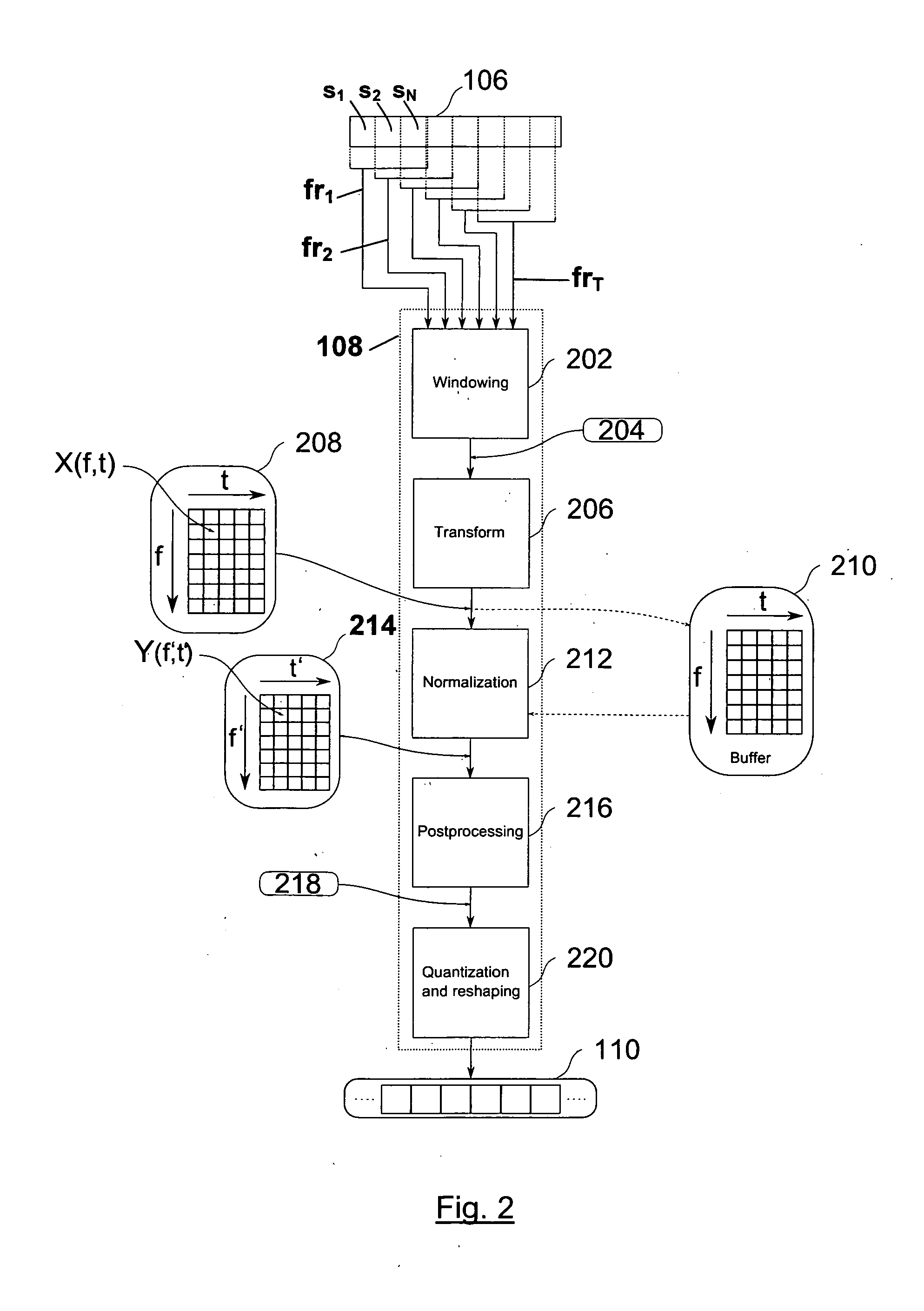Method and system for robust audio hashing
a technology of audio hashing and audio, applied in the field of audio processing, can solve the problems of inability to robustly resist format conversion, inability to implement, and inability to reliably resist format conversion,
- Summary
- Abstract
- Description
- Claims
- Application Information
AI Technical Summary
Benefits of technology
Problems solved by technology
Method used
Image
Examples
first embodiment
[0120]In a first embodiment, the invention performs identification of a given audio content by extracting from such audio content a feature vector which can be compared against other reference robust hashes stored in a given database. In order to perform such identification, the audio content is processed according to the method shown in FIG. 2. The preprocessed audio content 106 is first divided in overlapping frames {frt}, with 1≦t≦T, of size N samples {sn}. with 1≦n≦N. The degree of overlapping must be significant, in order to make the hash robust to temporal misalignments. The total number of frames, T, will depend on the length of the preprocessed audio content 106 and the degree of overlapping. As is common in audio processing, each frame is multiplied by a predefined window—windowing procedure 202 (e.g. Hamming, Hanning, Blackman, etc.)—, in order to reduce the effects of framing in the frequency domain.
[0121]In the next step, the windowed frames 204 undergo a transformation ...
second embodiment
This second embodiment can be seen as a sort of dimensionality reduction by means of a linear transformat ion applied over the first embodiment. This linear transformation is defined by the projection matrix
E=[e1, e2, . . . , eMb]. (13)
[0139]Thus, a smaller matrix of transformed coefficients 208 is constructed, wherein each element is now the sum of a given subset of the elements of the matrix of transformed coefficients constructed with the previous embodiment. In the limiting case where Mb=1, the resulting matrix of transformed coefficients 208 is a T-dimensional row vector, where each element is the energy of the corresponding frame.
[0140]After being distorted by a multipath channel, the coefficients of the matrix of transformed coefficients 208 are multiplied by the corresponding gains of the channel in each spectral band. In matrix notation, X(f,t)≈efTDvt, where D is a diagonal matrix whose main diagonal is given by the squared modulus of the DFT coefficients of the multipath...
PUM
 Login to View More
Login to View More Abstract
Description
Claims
Application Information
 Login to View More
Login to View More - R&D
- Intellectual Property
- Life Sciences
- Materials
- Tech Scout
- Unparalleled Data Quality
- Higher Quality Content
- 60% Fewer Hallucinations
Browse by: Latest US Patents, China's latest patents, Technical Efficacy Thesaurus, Application Domain, Technology Topic, Popular Technical Reports.
© 2025 PatSnap. All rights reserved.Legal|Privacy policy|Modern Slavery Act Transparency Statement|Sitemap|About US| Contact US: help@patsnap.com



